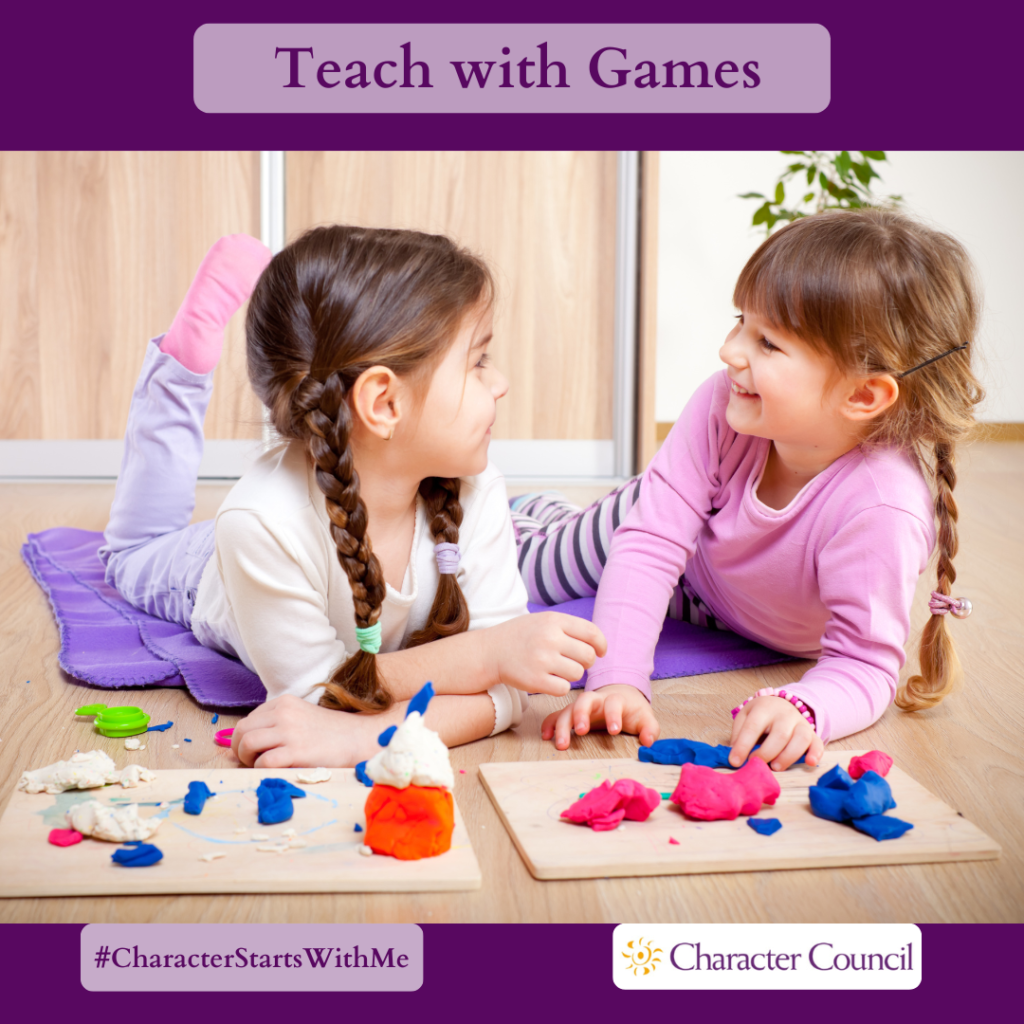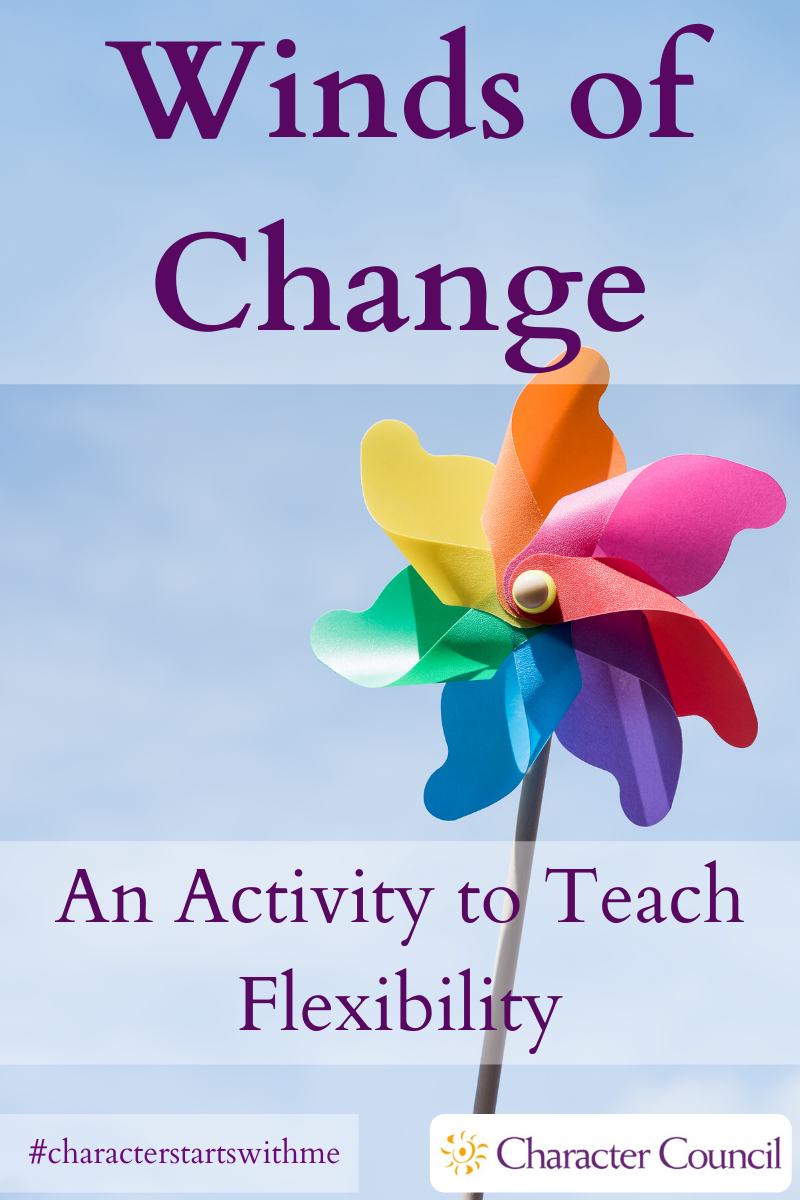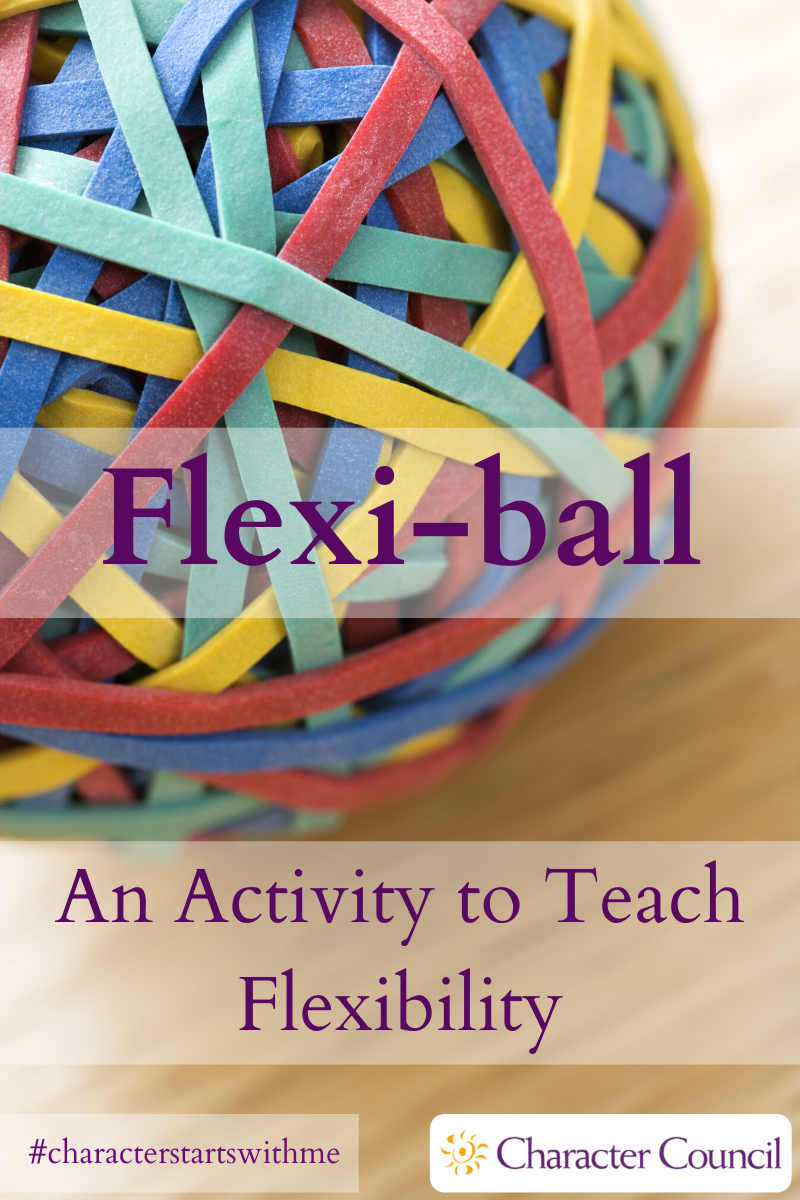
Flexibility Activities
The activities here are fun ways to teach character. The game aspect makes the lesson more memorable. Each activity has processing questions at the end. Without processing the activity, the exercise is just a game. To make it a stronger lesson when you process it, relate the character quality to a core value that your organization promotes.
Consider picking a student to run the activity. You will need to give them time ahead of the activity to prepare. Another option is to pick a few students to run the activity for a younger classroom after you have run it for your class. Encourage your students to repeat it in the home for younger siblings or even parents.


Winds of Change
Pinwheels demonstrate the concept of flexibility (a pinwheel that doesn’t turn will tear) and being anchored (pinwheels must be fastened securely or they will blow away). Visit https://www.instructables.com/id/Pinwheel/ for directions on how to make a pinwheel. After you cut the paper have the students fold the paper so they can see what remains as the leaves of the pinwheel. Unfold and have them write ways they can be flexible on the part that can be seen. Fold and finish the pinwheel. Make sure that the paper fastener is loose enough to spin.
To process this activity, ask these or similar questions:
- Was making the pinwheel fun?
- Will the pinwheel spin if it is too tight?
- What do you think would happen to a pinwheel that didn’t spin in a big wind?
- What would happen to the pinwheel in a big wind if it wasn’t anchored securely to the handle?
- How does a pinwheel react when it is hit with a change of blowing wind?
- How do pinwheels demonstrate flexibility?
- The next time changes “blow” your way, will you remember the pinwheel?

Flexi-ball
Wad a piece of aluminum foil into a ball. Make it the size of a ping pong ball. Give several students some toothpicks and ask them to wrap them around the ball. Obviously, they can’t. Next give them a handful of rubber bands and ask them to wrap those around the ball. This works much better. Give each student a rubber band. Pass the ball around and have each of them add their rubber band to the ball. As they do so, they should give an example of sometime in the past that they were flexible. For younger students, you may want to provide them a list from which to choose. You could also write an affirmation that is appropriate to their age group such as “I am flexible when changes occur.” Have them state it when they are placing their rubber band on the ball.
To process the activity, ask these or similar questions:
- Was it fun to make a ball from rubber bands?
- How does a rubber band react to change?
- How is that like being flexible to changes in your life?
- Will you remember the rubber band ball the next time you are faced with change?

Egg Vs Tennis Ball
Cover part of the floor with newspaper (or do this outside where you can hose down afterward). Have one of your students drop a raw egg onto the newspaper. Have your students observe its reaction when it hits an obstacle. Now have them drop a Tennis ball (but not in the egg mess!) and observe its reaction to the obstacle. Discuss with your students how these two reactions demonstrate how to react when something gets in your way that changes your plans. If you are like the egg, you crumble and stop when your plan hits a snag. If you are like the Tennis ball, you bounce and get right back in the game.
To process this activity, ask these or similar questions:
- What did the egg do when it hit an obstacle?
- What did the tennis ball do when it hit an obstacle?
- What do people do when we (figuratively) hit an obstacle?
- Are you more like the egg or the tennis ball when you (figuratively) hit an obstacle?
- Will you remember the egg and tennis ball the next time something gets in the way of your plans?